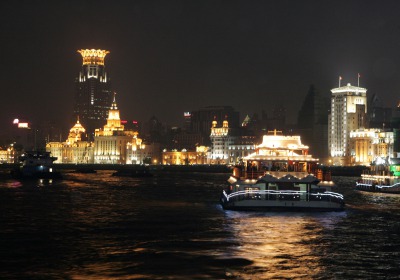Report: Interior Motives China Conference 2009 – Day 2
Tue, 28 Apr 2009After a boat trip down the Huangpo River in the evening of the first day to give delegates and speakers a chance to mix more informally, it was soon time to get back on with the second day of the conference. This saw a speaker and panel line-up including experts from Lotus, Bertone, Geely, the Royal College of Art, Tsinghua University and Art Center Pasadena, covering sessions as diverse as environmental design, better car design education and brand identity.
Session 5 - Eco design futureThis environmentally focused session was kicked off by a thoughtful speech from Nathan Mullinix, VP research and development for leather supplier and conference sponsor Eagle Ottawa. Far from suggesting that he had all the answers, Mullinix came across as someone trying to review all areas of his business based on a genuine concern to make his car seating greener. Just one example cited was Eagle's ‘repurposing' of food industry bi-product vegetable soy to add suppleness to their leathers, rather than having to manufacture something new, more artificial and polluting. He also espoused the ‘never in, never out' policy - i.e. if you don't put/use harmful stuff into your process you don't have to work out a way to remove it or recycle it at the end of its life.
Filipe Braganca, design director of Axius Designs, followed that up by explaining how complicated developing groundbreaking eco car designs can be. As one of the pioneers of electric vehicles in China -his fully working prototype for a Guangzhou city taxi project is one of the first EVs to be designed and built in the country - Braganca explained in illuminating detail the arduous process of sourcing suppliers and optimizing every part for weight and efficiency. Despite some setbacks, he insists that, "a new era in transportation is definitely starting".
This can't come soon enough for Hannah Macmurray, founder of the Green Car Design website. She outlined many eco car trends as well as the segments most likely to green first: city, sports and family cars. She also highlighted possible forms of advanced alternative transport, including the Air Pod by Swiss firm MDI, and Fosters & Partners' wider-reaching Abu Dhabi eco city proposal, before playing a heart-warming video outlining why she believed her generation - Gen X - would be the one to force this change. As she passionately explained in the Q&A: "Change is possible. When I came to Shanghai at 16 there were no cars - look at it now. We always find a way, not always the right way at first. But maybe China will be quicker to undo the damage than other countries."
Session 6 - Effective car design education
The penultimate session boasted a speaker panel made up of some of the world's best car design educators. Li-Chih Fu, director of the China Automotive Design Institute, started proceedings with another fascinating insight into understanding the demographics of the Chinese car buyer. Next up was the enigmatic Ed Wong, director of transportation design at the Central Academy of Fine Arts (CAFA) and president of Beijing Zhun Zhou. Wong revealed the emphasis he places on "analogue" - encouraging his students to sketch first and use all their senses rather than just rely on CAD - and how he indoctrinates them into car culture so as to make them better car designers. As he joked: "I make my students get a driving license and go to F1 - so they ditched class to watch it and I gave them an 'A'!"
Yan Yang, professor at the Academy of Arts and Design, Tsinghua University, then explained how he teaches his students to have a longer vision than "just getting a job" and to master technique, knowledge, sense, taste, research and thinking in order to compete on the international stage.
Continues →
By Guy Bird

